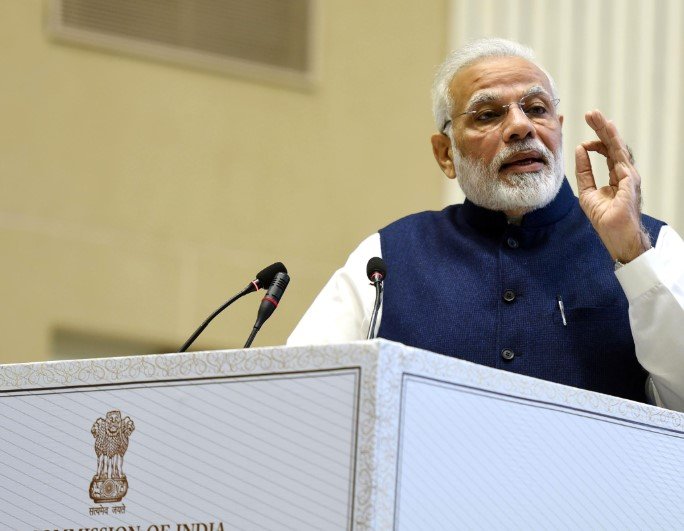India’s Prime Minister Narendra Modi has rolled out major tax cuts under the Goods and Services Tax system, effective from September 22, 2025, aiming to ease costs for everyday items and boost consumer spending. These changes simplify the tax structure to just two slabs of 5 percent and 18 percent, slashing rates on essentials like milk, bread, and medicines, just in time for the festive season starting with Navratri.
What the GST Reforms Mean for You
The government announced these reforms as a Diwali gift, focusing on reducing the tax burden on common people and businesses. Officials say the move will save Indian households around 2 lakh crore rupees annually by making daily necessities cheaper.
This overhaul comes after years of criticism that the old GST system was too complicated with four slabs. Now, with a streamlined approach, items like soaps, toothpaste, and Indian breads fall under the lower 5 percent rate, while bigger purchases like small cars and air conditioners drop to 18 percent from 28 percent.
Experts point out that these cuts build on the original GST launch in 2017, which unified taxes across states. Recent data from the finance ministry shows GST collections hit a record 2.1 lakh crore rupees in April 2025, giving the government room to offer relief without hurting revenue.

How Tax Cuts Will Boost Household Budgets
Families across India stand to gain more disposable income from these reductions. For instance, zero tax on life-saving drugs and medical insurance means lower healthcare costs, which have risen sharply in recent years due to inflation.
Lower taxes on consumer goods could lead to price drops of up to 10 percent on many items, according to economists. This extra savings might encourage people to spend on non-essentials during festivals, helping revive sluggish demand seen in early 2025 retail reports.
A recent survey by the Confederation of Indian Industry found that 70 percent of consumers plan to increase spending this festive season if prices fall. With inflation cooling to 5.4 percent in August 2025, these cuts add timely relief.
- Milk and dairy products: Now tax-free, down from 5 percent or more.
- Electronics like TVs and ACs: Reduced to 18 percent, saving buyers thousands.
- Personal care items: Hair oil and shampoo at 5 percent, easing monthly expenses.
Timing with Festive Season for Maximum Impact
The reforms kick in on the first day of Navratri, setting the stage for a spending surge through Diwali and beyond. This four-month festive period accounts for about 40 percent of annual sales for many retailers, from apparel to automobiles.
Prime Minister Modi urged citizens to buy local products in his recent address, linking the tax cuts to self-reliance amid global trade tensions like U.S. tariffs. Retailers report early signs of boosted demand, with car sales projections up 15 percent for October 2025.
Analysts predict this could add 0.5 percent to India’s GDP growth in the fiscal year, countering slowdown fears from export hits. Last year’s festive spending reached 3.5 lakh crore rupees, and experts forecast a 20 percent jump this time due to the tax relief.
Economic Ripple Effects and Business Gains
Businesses, especially small and medium enterprises, will benefit from simpler compliance and lower input costs. The two-slab system reduces paperwork, allowing faster refunds and better cash flow.
A report from the Reserve Bank of India highlights how past tax tweaks lifted manufacturing output. With these changes, sectors like fast-moving consumer goods could see profit margins improve by 2 to 3 percent.
However, some worry about short-term revenue dips for the government, though officials assure that higher consumption will offset losses. Recent events, like the rebound in stock markets after the announcement, show investor confidence in the plan.
| Item Category | Old GST Rate | New GST Rate | Expected Price Drop |
|---|---|---|---|
| Milk and Bread | 5% | 0% | Up to 5% |
| Small Cars | 28% | 18% | 8-10% |
| Soaps and Shampoo | 18% | 5% | 10-13% |
| Life Insurance | 18% | 0% | Full tax savings |
| Air Conditioners | 28% | 18% | 7-9% |
Expert Views on Long-Term Benefits
Leading economists praise the move for addressing consumption slowdown, which dropped to 4 percent growth in the last quarter. They say it aligns with global trends where countries like the U.S. and China use tax relief to stimulate economies.
One analyst noted that similar reforms in 2020 helped India recover from pandemic lows. With unemployment at 7.8 percent in urban areas as of July 2025, increased spending could create jobs in retail and manufacturing.
The changes also promote fairness by taxing luxuries higher while sparing essentials. This could help narrow income gaps, as lower-income groups spend more on now-cheaper basics.
Potential Challenges Ahead
Not everything is smooth. Some states fear revenue sharing issues under the new system, though the central government promises compensation.
Inflation watchers caution that if companies do not pass on savings, prices might not fall as expected. Monitoring bodies like the consumer affairs ministry plan strict checks to ensure benefits reach people.
Overall, the reforms mark a bold step toward a stronger economy, but success depends on effective rollout and market response.
What do you think about these tax cuts? Will they change your festive shopping plans? Share your thoughts in the comments and spread the word to help others stay informed.
